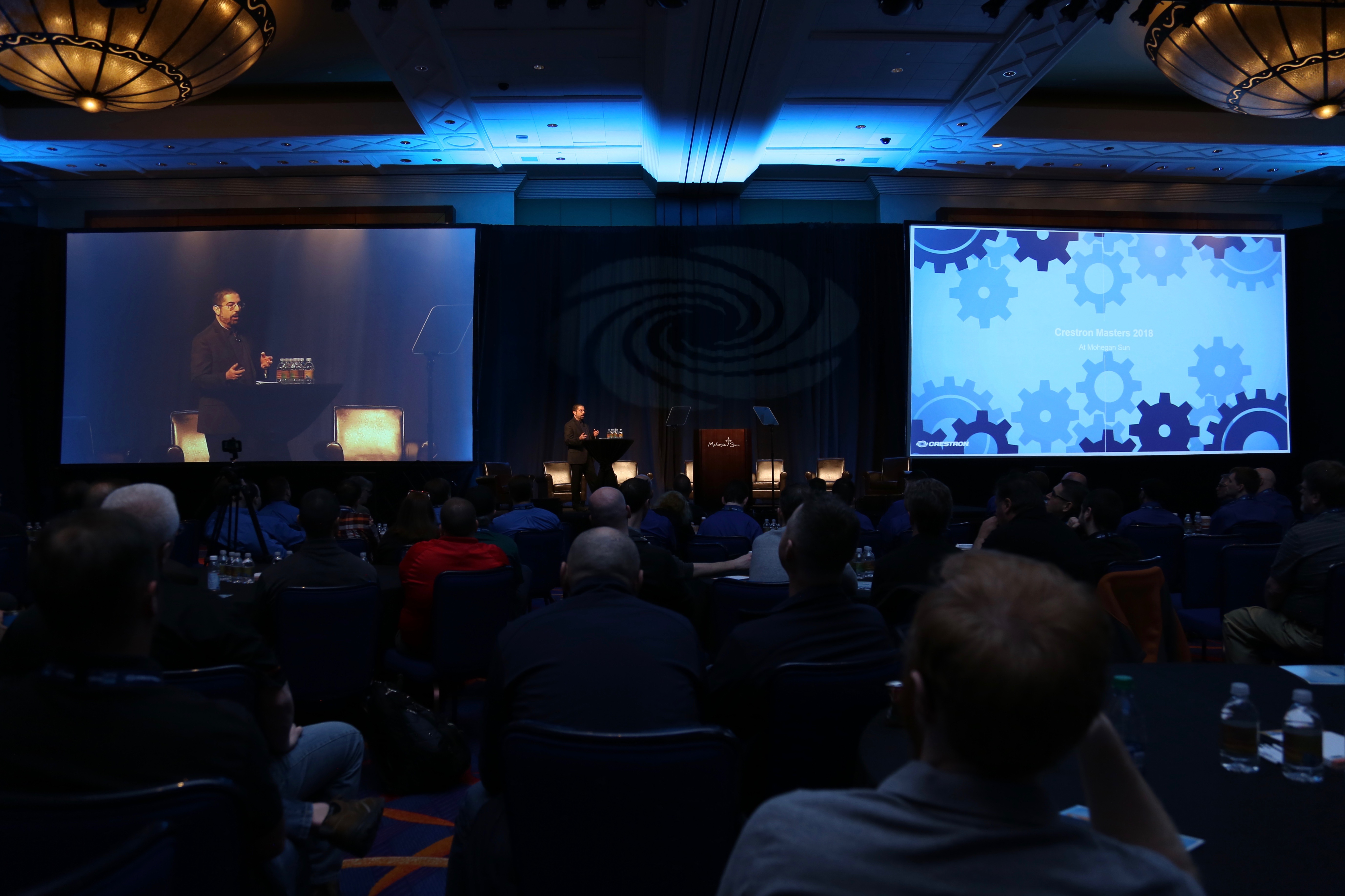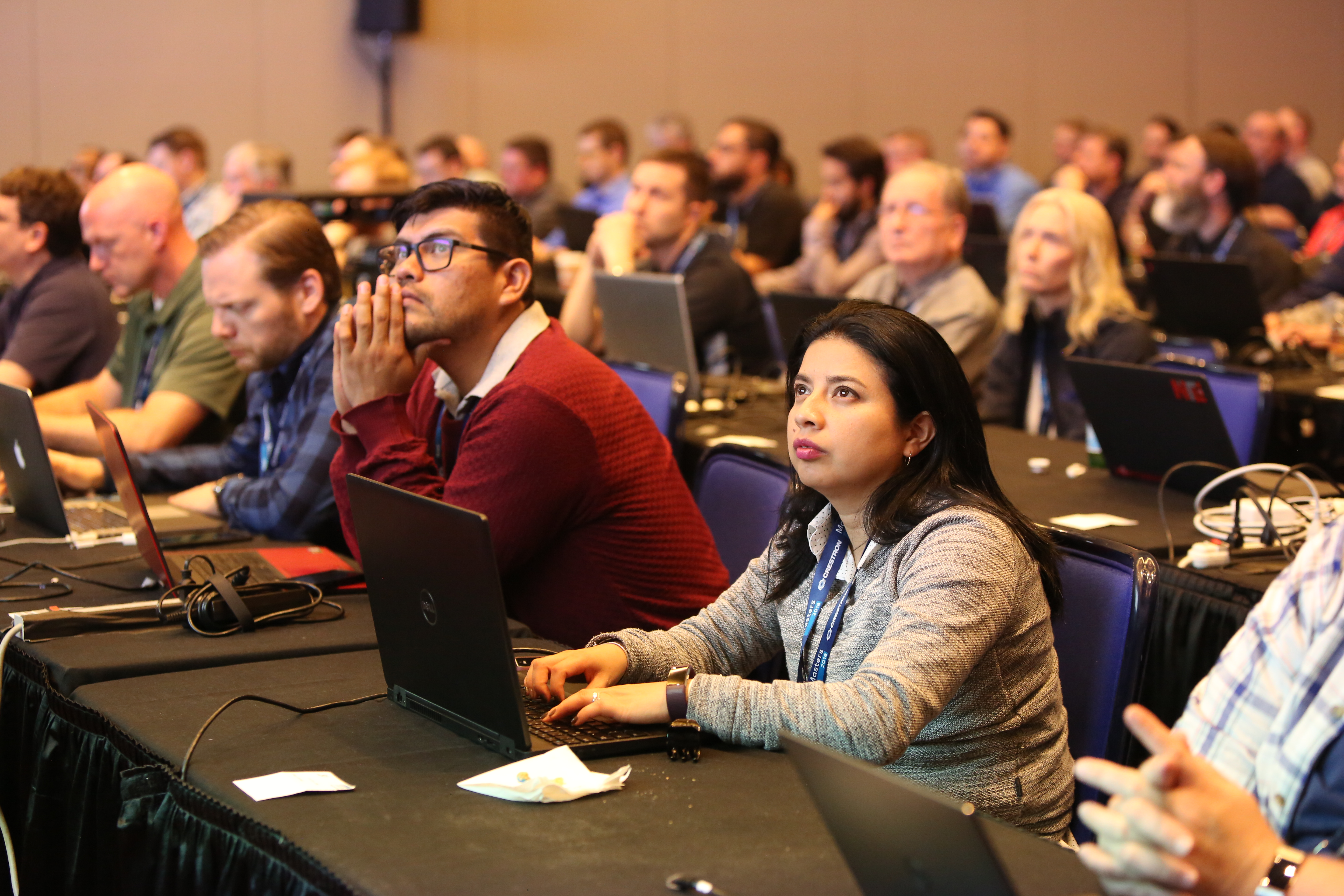For the past 15 years, the annual Crestron Masters event has been all about programming—learning to make systems do amazing new things. But if the people who design the system can’t completely grasp from the programmers what’s possible, the end user’s ideal experience can be lost in translation.
This year, the company took a major step toward improving upon the way its systems are implemented, introducing the Masters Technology Architecture (MTA) program and inviting systems design engineers to the conference for the first time.
“Creating a great customer experience with a system that is programmed requires a solid design—a proper design, one that follows best practices,” said Rich Sasson, Crestron’s global director of technical services and one of the key orchestrators of the Masters event. “As a programmer, you want to have a solid design to work from. And as a designer, you want the information provided to the team that will create the best possible experience for the customer. By having the designers and programmers at Masters, you now have the opportunity to learn the best practices of design and programming together.”

The Masters 2018 event, held April 11–12 at the Mohegan Sun Casino and Resort in Uncasville, CT, brought together more than 900 attendees—a 30 percent increase compared to last year, according to Crestron president and CEO Randy Klein. “This year by far is the biggest and best event that we’ve ever put on,” Klein said to a packed ballroom at the Tuesday morning orientation.
The bump in attendance was due at least in part to the addition of 125 design engineers who came to take advantage of the new MTA program. According to Sasson, the idea to invite this contingent came from a brainstorming session with Klein last July.
“Randy and I sat down and talked about how we could make Masters an even more effective program, and he said, ‘How can you be successful as a programmer if you don’t have the design right? If the designers don’t know what the programmers need, and the programmers don’t know what the designers need, how do you end up with a good system?’ So ultimately what we have to do is build a Masters technology program that has the designers coming in and learning about technology, about Crestron, from the ground up, so that they can work with the programmers and create a unified solution.”
Sasson said the enthusiasm for MTA was readily apparent. There were 225 people registered for the courses before the summit; after he and Klein explained it at the orientation, roughly 100 more people decided to enroll. “We didn’t expect that, we’re very surprised by that, because we figured maybe one or two, maybe five might jump,” Sasson said. “There was a line up the hallway.”

This avidity appeared to be shared by the instructors, like Jon Ottesen, Crestron’s senior technical director. He believes that the MTA program will help to alleviate one of the central problems of the industry: communicating what AV can do. “We continue to overcomplicate conversations with people instead of being able to oversimplify things for the purpose of understanding,” he said. “We listen to respond, not always listen to understand.
The benefit here, Ottesen explained, was identifying the gap in the communication chain from customer to outcome. “And we identified that gap not as the designers being poor; we identified it very simply: Nobody bothered to tell the designers how to phrase the language to get the outcomes they wanted.”
According to Sasson, the addition of the MTA tract is just the first step in an ongoing evolution of the Masters program. “We’re going to do some really cool stuff next year,” he said. “I expect the program to go about another 300 people next year, between certified programmers, technology architects, and more. The Masters program is going to continue to grow, we’re going to continue to expand, and bring more people in to get this industry, and give the people who are here now the respect that they deserve. Because truthfully, I think they’re an under-respected group. They provide phenomenal services to our customers and they need to be recognized for the work they do.”
